I’ve been visiting tree and shrub growing nurseries across the country to buy plants for nearly thirty-five years. In the early years my traveling partner and I kept a close watch for Japanese maples as we traveled through neighborhoods visiting nurseries just outside Portland, Oregon (the Japanese maple growing capital of the U.S.). Here were small lots and homes mixed with five and ten acre properties, and occasionally we’d see a small field planted with red leafed maples from a distance. We’d screech to a halt to knock on the front door of the nearest house to see who owned the trees, and to inquire if they were for sale. Usually they were already spoken for.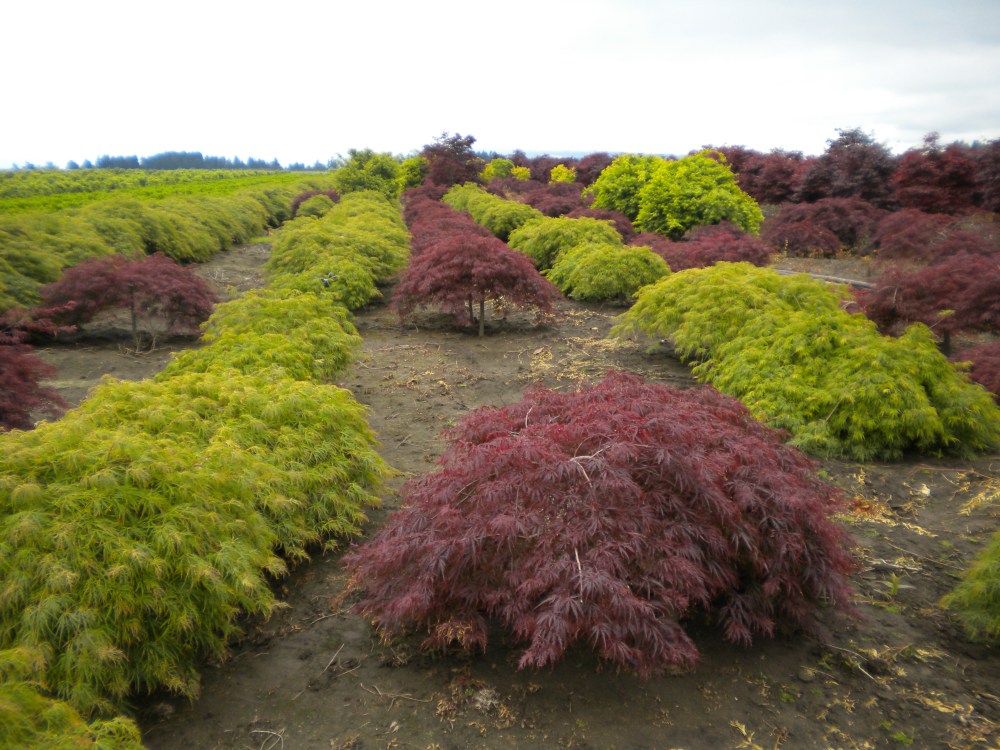
Those were the days (though not especially good days for a garden center buyer), when Japanese maples were grown in limited quantities, and were parceled out to the highest bidder. Selection was usually limited to a few weeping varieties (Acer palmatum dissectum ‘Crimson Queen’ and ‘Everred’) and the upright growing ‘Bloodgood’ (Acer palmatum ‘Bloodgood’) because nurseries sold everything they grew and had no incentive to offer anything out of the ordinary. I saw other types of Japanese maples only in arboretums and botanic gardens, and didn’t dare dream that I could own even a small collection beyond the common varieties.
As gardening demand increased in recent years a market developed for slow growing dwarf conifers and unusual types of Japanese maples, though the ten or fifteen varieties introduced into commerce are still only a fraction of the thousands of known Japanese maples. A few nurseries now specialize in growing a wider range of trees, with yellow, red, green, and variegated leaves (Acer palmatum ‘Ukigumo’, above) of assorted shapes and sizes, and dwarf forms (Acer palmatum ‘Shaina’, below) that will take years to rise above five feet tall.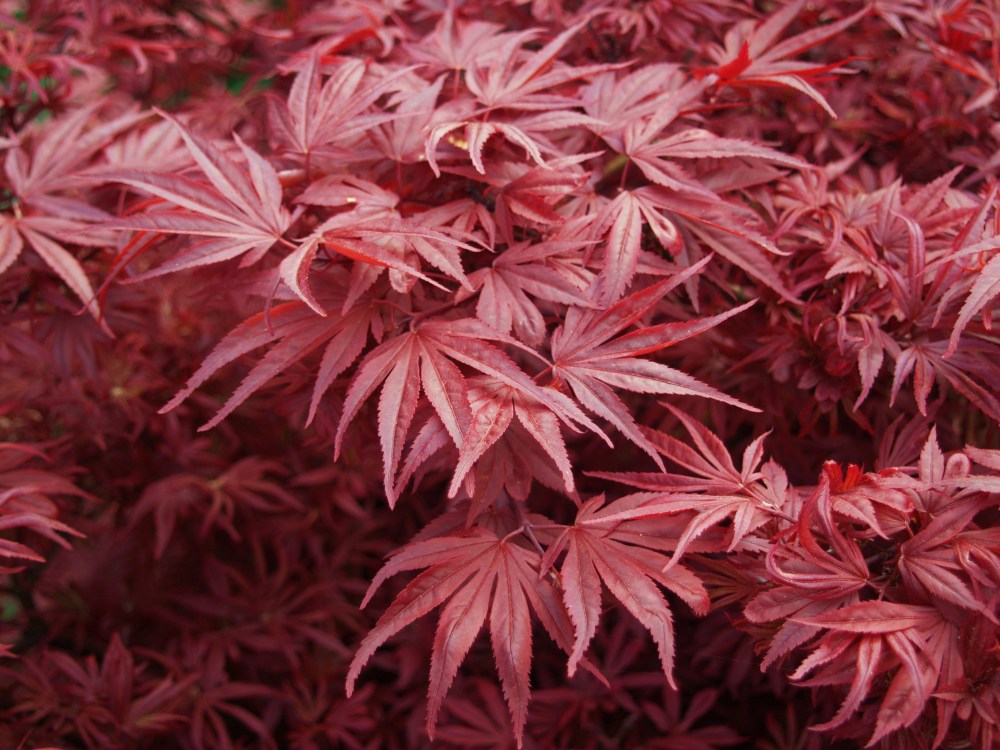
Over the past ten years I’ve looked for unique Japanese maples that I can add to my garden, and I’ve added a few handfuls that are slightly less than common. There are now more than twenty Japanese maple cultivars in the garden (twenty two or twenty three, maybe twenty four, I’ve lost count), and there are two or three of several so there are thirty maples in the garden (give or take a couple).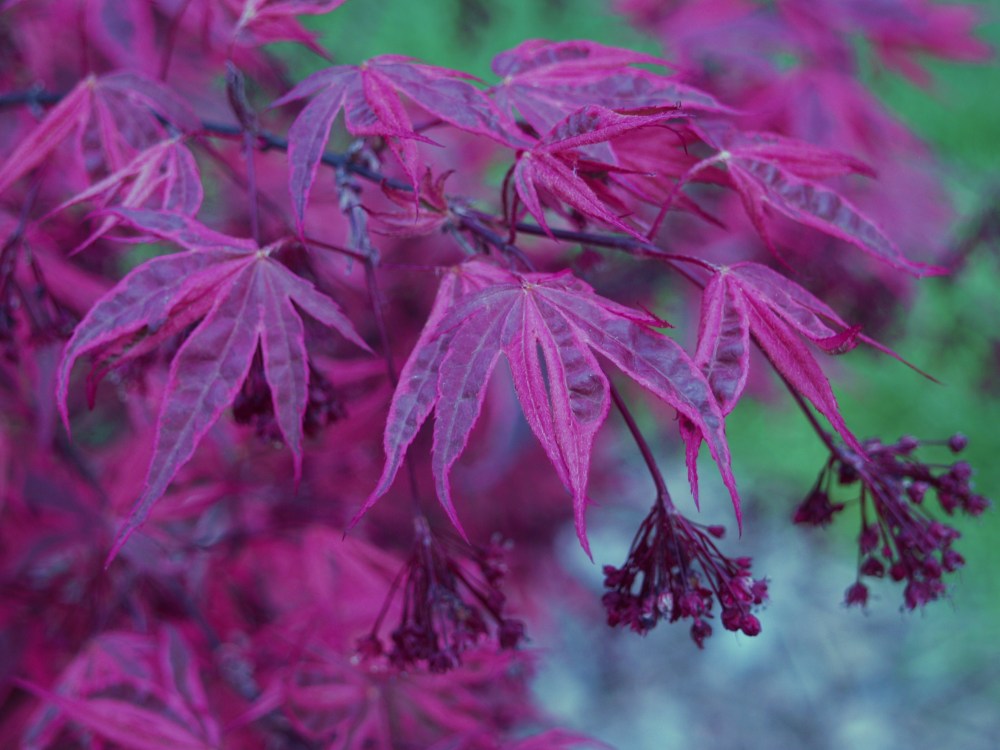
Most of these aren’t rare, but many are a bit out of the ordinary. While accumulating this small collection I’ve been determined not to break the bank, and several Japanese maples are leftovers, or trees with damaged trunks and permanent scars that make a tree unsaleable except to a serious bargain hunter. Of all the trees I’ve planted with broken root balls and gashed bark, withered foliage, and dead branches, I’ve never had a single Japanese maple fail to survive, and most recover from serious injury much more quickly than I could imagine.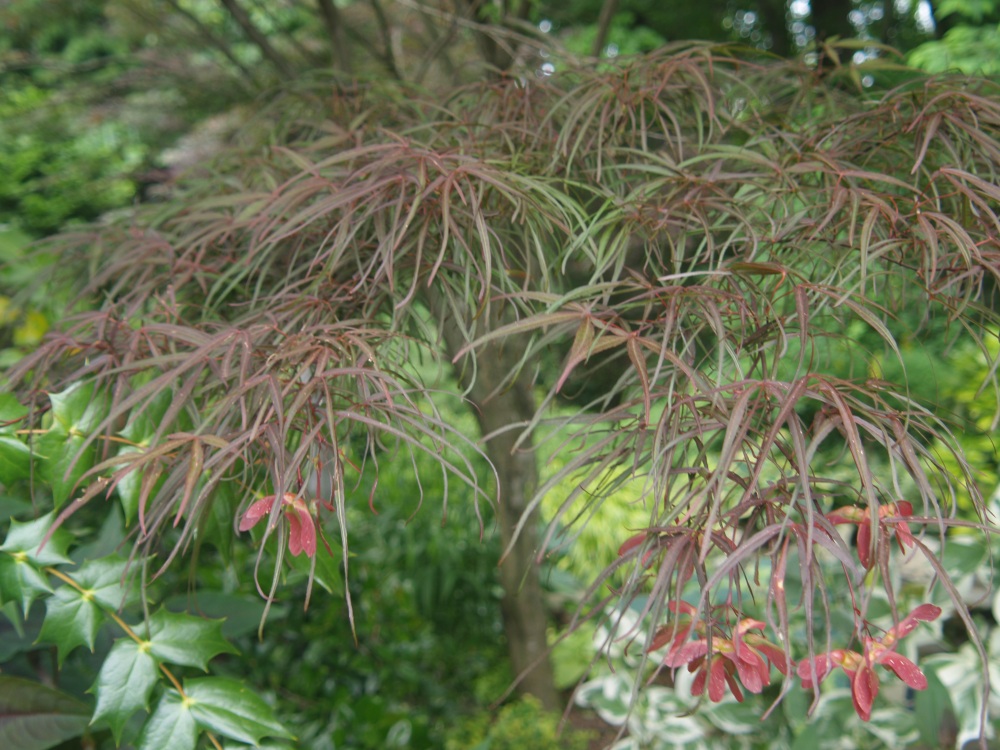
I’ve no complaint with the common Japanese maples available in every garden center and box store. These are wonderful trees that have earned their popularity, but occasionally the venturesome gardener reaches outside the ordinary, and there are many Japanese maples that are quite wonderful.
While red leafed maples are most common, there are splendid green leafed varieties. I’ve never been overly impressed with the Coral Bark maple (Acer palmatum ‘Sangu-kaku’, above) with fiery red young branches that shine in winter, though this variety is quite popular. The foliage is a dull green and unremarkable. I won’t be digging the large tree in my garden out any time soon, but there are others that I prefer. The Lion’s Head maple (Acer palmatum ‘Shishigarshiri’, below) has oddly crinkled foliage, and I liked the first one I planted enough to plant another five years later. The slow growing trees are now taller than ten feet with an upright branching habit and leaves clustered in bunches at the branch tips.
I’ve planted several Japanese maples with variegated foliage with varying combinations of white, green, and pink, and for years I lusted to find a yellow leafed Golden Full Moon maple (Acer shirasawanum ‘Aureum’, below) until finding a lone six foot tree left behind in a field of smaller maples because its trunk had been damaged by rabbits or some other hungry beast. I had considered purchasing a smaller tree by mail order for years, but reconsidered every time when I thought about its slow growth. The scar on the trunk has still not healed completely, but the Golden Full Moon maple is growing vigorously, slightly taller and wider each year.
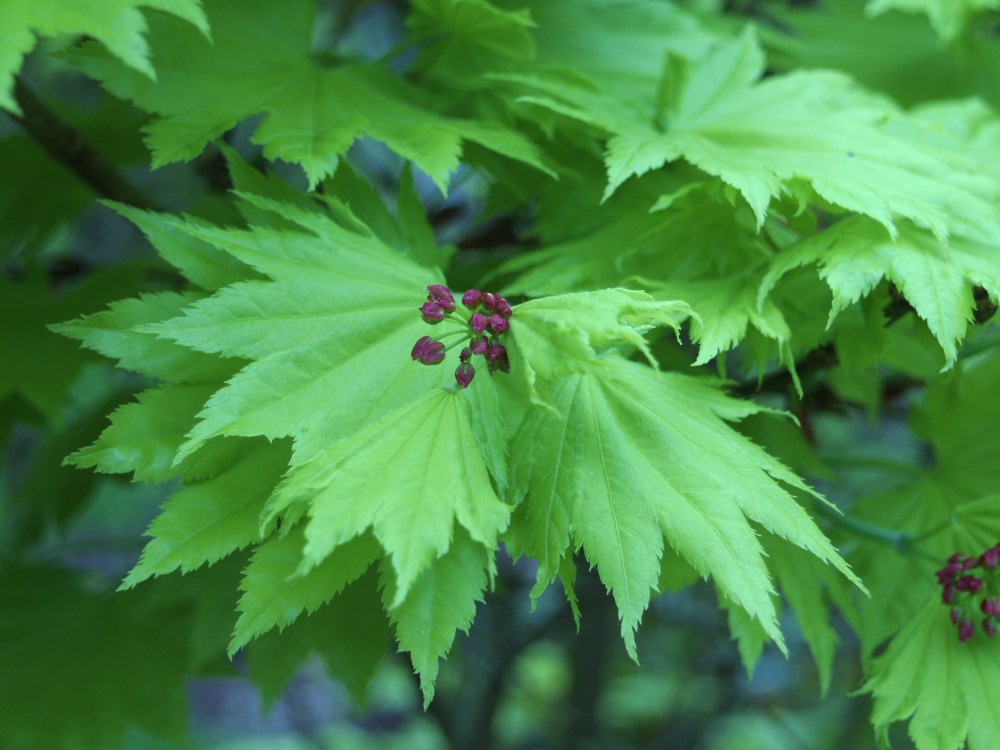
Unfortunately, I’ve nearly run out of space, so there is limited space to jam another Japanese maple into the garden. These splendid trees deserve a space where they can be fully enjoyed, and so even as I shoehorn other plants into the tiniest spaces, care is taken that the Japanese maples have ample space to spread.
Beautiful pictures! One of my favourite types of plant and we are lucky enough to have a few.
Dave….it’s clear that you have a favorite spot in your heart for Japanese maples. I’d reported previously that your firm planted one as part of a major re-landscaping in my front yard. It’s been about 10 years now, and the JM is about 12 feet tall. I think that’s its max height. Two “volunteers” have sprouted in the mulch across the sidewalk near my boxwoods. They’re about 12″ tall now, and are competing with the shrubs for space. When their little leaves fall off in the fall or winter, I’m going to move them to a less crowded venue, with as much of a root ball as I can manage. Should be very small given the tiny size of these volunteers. I assume the little butterfly things we see forming on the parent tree are actually seeds that can also be planted somewhere, with a little help from me. Is that correct? Any advice on timing, soil amendments, etc?
The best time to move the seedling maples is after the leaves have dropped in autumn, or in early spring before they leaf again. If a small seedling is lifted when the ground is damp it should transplant very easily.
In my garden the winged seeds germinate readily in shaded ground that is fairly moist. In full sun the soil dries more quickly and seedlings seldom grow, so I suspect that constant moisture (but not wet) is the key to seeds sprouting successfully. If you gather seed to plant it is best to try to duplicate these conditions, just as growers who grow seedlings plant their seeds under shade in well drained soil that is regularly irrigated. The best practice is to plant more seeds than you need and thin out plants after the seedlings sprout.
Few Japanese maples seedlings will be identical to the parent plant, though often they are close in appearance. Of the thousands of seedlings that spout in my garden each year there are some that are similar, and others that are quite different. If I had more space and energy I would love to set up trial gardens to grow some of the seedlings on to see what they would grow into.
Sarah says:
I also am an inveterate lover of Japanese maples. There were 3 mature trees here when we bought the house, and the beauty of the swirled trunks was immensely pleasing. They are palmatum with leaves much like ‘Shaina’ or Coral Bark in shape, but color of bark and leaves is different (no red twigs, no burgundy or dull green leaves). The mature trees were above the height of the 2 story built in ’38, but the trees weren’t planted for another 30 years. Offspring are not always identical, and tho’ most have bright green shiny leaves, occasionally we get a red youngun or cutleaf or twist. Birds could have something to do with this. The majority have slightly weeping branches with leaves which open earlier than our hardwoods and stay exuberant till the first good frost. Then the leaves light up the neighborhood with their bright blazing red, and stick around considerably longer than expected unless we have more freezing weather and high winds. Even the fallen leaves make me happy, covering the grass and shrubs with delicious lively red until finally they start to curl. Last gift: no raking.